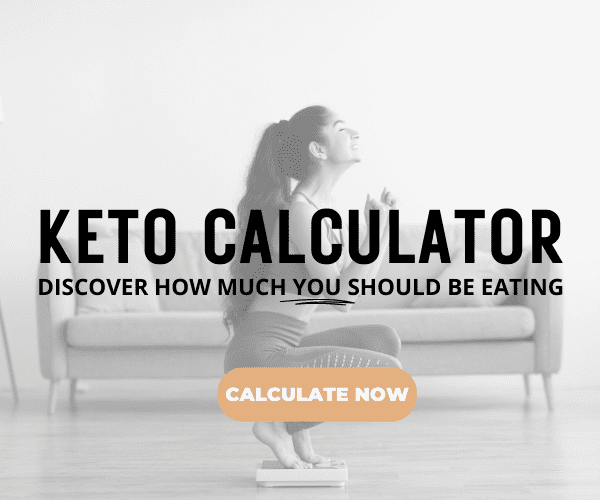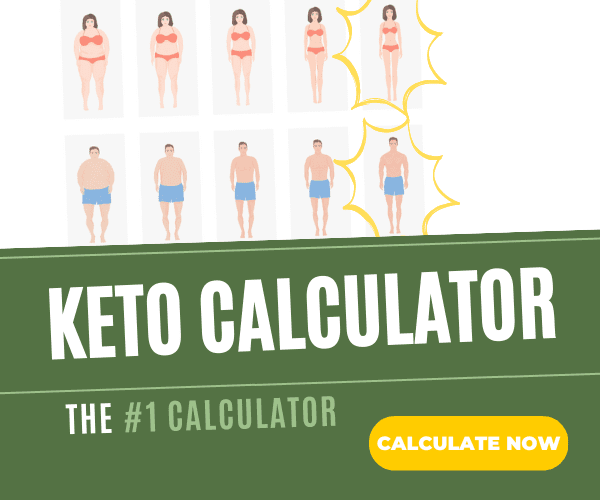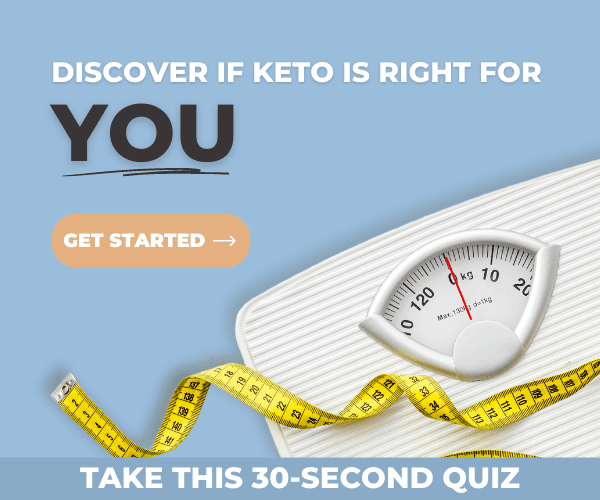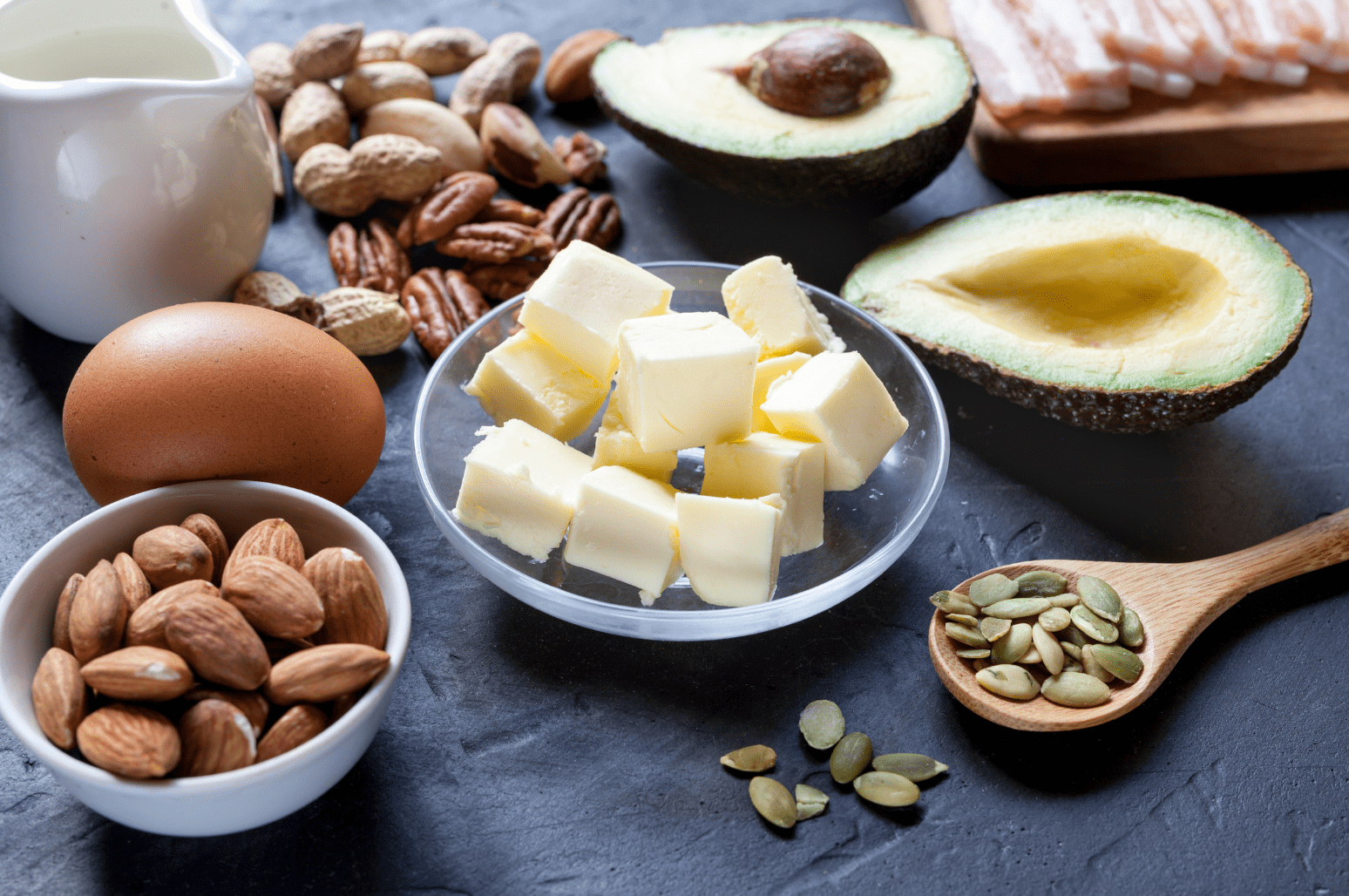
You know you need vitamins for optimal health and eating a nutrient-dense, balanced diet provides you with those vitamins. You’ve heard about fat-soluble vitamins, and you know you’re eating plenty of healthy fats on your ketogenic diet! So, what exactly are fat-soluble vitamins and what are the benefits? Vitamins are classified by their solubility. Let’s discuss fat-soluble vitamins and why you need them.
What Are Fat-Soluble Vitamins?
Just as oil doesn’t dissolve in water, fat-soluble vitamins don’t dissolve in water, while water-soluble vitamins do. Fat-soluble vitamins are properly absorbed by your body when you eat them with dietary fat. They’re usually found in high-fat foods like avocado.
The four fat-soluble vitamins are A, D, E, and K.
Let’s look into the health benefits, functions, keto food sources, and signs of deficiency of these four vitamins.
Vitamin A
The group of vitamin A fat-soluble compounds is collectively called retinoids. Retinol is the most prevalent dietary form of vitamin A. Vitamin A2 (3,4-dehydroretinal) is an alternative and less active type of vitamin A present in freshwater fish. Other forms are in the body but absent or rarely found in foods. [1]
Benefits of Vitamin A
Vitamin A is an important vitamin when it comes to maintaining your vision and forming tear fluid. You’d actually go blind without it! Vitamin A is an immune system booster that’s also necessary for cell growth, including hair growth. [2] [3] [4]
Vitamin A is vital for fertility and fetal development. [5]
Keto Food Sources of Vitamin A
Animal products such as the following are the only direct sources of vitamin A:
Your body can also derive vitamin A from certain carotenoid antioxidants in plants (provitamin A). Beta-carotene is the most efficient of these, and is found in higher amounts in veggies like kale, spinach, and carrots. [6] [7]
Keep in mind that, depending on factors like genetics, provitamin A isn’t always efficiently converted into retinol, which is the active form of vitamin A. Those on a vegan diet or a diet lacking in meat, fat, and vegetables could be at risk of vitamin A deficiency. [8]
Symptoms of Vitamin A Deficiency
Symptoms of a vitamin A deficiency include dry eyes, hair loss, and poor immune function. [9]
Symptoms of Vitamin A Toxicity
Like most things in your body, balance is needed. Overdosing on vitamin A can lead to hypervitaminosis A, a rare but serious condition usually caused by excessive doses of vitamin A supplements or fish liver oil. A high intake of provitamin A doesn’t cause hypervitaminosis.
Symptoms of vitamin A toxicity include fatigue, headache, stomach pain, joint pain, vomiting, and blurred vision. Vitamin A can be fatal at extremely high doses. Health professionals advise staying in the safe range, which is less than 3,000 mcg of preformed vitamin A daily for adults. Children and people with liver diseases like hepatitis and cirrhosis should be more cautious with vitamin A intake and might be at an increased risk of hypervitaminosis A. With pregnant women, excess vitamin A could be harmful to the developing baby. [10]
Vitamin D
When your skin is exposed to sunlight, your body produces vitamin D, which is also called a hormone or the sunshine vitamin. Vitamin D collectively refers to a few fat-soluble compounds.
Vitamin D is found in two dietary forms: D2 and D3. Your body converts these calciferol forms of vitamin D into the biologically active form of vitamin D or stores it for later use in the form of calcidiol. The body typically converts vitamin D3 more efficiently into calcitriol than vitamin D2, and some health experts believe vitamin D3 is superior to vitamin D2 in terms of bioavailability and absorption. [11]
Vitamin D2 (ergocalciferol) is present in mushrooms and certain plants.
Vitamin D3 (cholecalciferol) is found in animal foods like fish oil, fish, and eggs.
Benefits of Vitamin D
Vitamin D is involved with numerous functions in your body, such as maintaining bone health and strengthening your immune system. Vitamin D regulates circulating levels of phosphorus and calcium, which are key minerals for bone growth and maintenance. Low vitamin D levels have been associated with various conditions and infections, including viral infections. [12] [13]
Sources of Vitamin D
If you’re regularly exposing large parts of your skin to sunlight, your body is producing some vitamin D on its own. Some people go fully clothed in the sun or hardly ever get out in the sun, and others use protective sunscreen, which reduces the amount of vitamin D produced by the skin. [14]
Lots of people are lacking in vitamin D, and few foods naturally contain vitamin D. The best dietary keto sources are mushrooms, salmon, and fish liver oil. Some dairy products like milk also come with added vitamin D.
Symptoms of Vitamin D Deficiency
Mild forms of vitamin D deficiency are common in weak, frail, older, and hospitalized adults. Obesity, older age, low sun exposure, and diseases that impair fat absorption increase the risk of a vitamin D deficiency.
Vitamin D deficiency can lead to weak muscles, soft bones, and a heightened risk of fractures. The condition is known as rickets in children and osteomalacia in adults. [15]
Some of the symptoms of vitamin D deficiency are hair loss, depression, impaired wound healing, and fatigue. Low vitamin D levels and deficiency have also been associated with an increased risk of heart attacks and cancer fatality. [16]
If you don’t go out in the sun much or eat salmon or fish liver oil, taking vitamin D supplements has been shown to promote longevity, particularly in older adults in care facilities or those who are hospitalized. Supplements might reduce the risk of respiratory tract infections. [17] [18]
Vitamin D Toxicity
Vitamin D toxicity is especially rare. Spending lots of time in the sunshine doesn’t cause vitamin D toxicity, but taking high amounts of supplements could be problematic. The main complication of vitamin D toxicity is excessive amounts of calcium in the blood (hypercalcemia). Symptoms of hypercalcemia include weight loss, fatigue, lack of appetite, high blood pressure, and kidney damage.
The general recommendation is to avoid going over the upper limit of 4,000 IU daily for adults. Some people take vitamin D therapeutically at higher doses under doctor supervision while monitoring their calcium intake and calcium levels to avoid hypercalcemia.
It’s best to visit your doctor if you’d like to check your vitamin D levels and discuss supplementation or diet changes.
Vitamin E
Vitamin E is a powerful antioxidant that helps prevent aging and protects fatty acids in your cell membranes from harmful free radicals. Most of the vitamin E in the blood is the alpha-tocopherol type. In high amounts, vitamin E acts as a blood thinner, decreasing the blood’s clotting ability. [19] [20]
Keto Food Sources of Vitamin E
Nuts and seeds, avocados, fatty fish, and fish liver oil are among the richest food sources of vitamin E. The recommended daily intake (RDI) of vitamin E for adults is 15 mg. [21]
Symptoms of Vitamin E Deficiency
Vitamin E deficiency typically occurs when diseases, such as liver disease or cystic fibrosis, impair the absorption of vitamin E or fat from food. Symptoms of vitamin E deficiency are muscle weakness, numbness, vision problems, weakened immune function, and tremors. Severe long-term deficiency could lead to heart disease, neurological problems, blindness, dementia, and the inability to completely control body movements. [22]
Vitamin E Toxicity
It’s difficult to overdose on natural dietary sources of vitamin E, but cases have been reported after people have taken especially high doses of supplements. Overdosing on vitamin E appears to be less harmful than overdosing on vitamins A and D, but medical attention might still be necessary.
Vitamin E could have blood-thinning effects that counteract the effects of vitamin K and result in heavy bleeding. People taking blood-thinning medications should avoid taking high doses of vitamin E. [23]
High vitamin E intake from food or supplements has shown benefits, such as increasing blood flow and potentially reducing blood pressure and the risk of heart disease. On the other hand, observational studies show taking vitamin E supplements has been linked to prostate cancer. The long-term safety and effects of vitamin E supplementation are debated among scientists. At this time, and until more research is available, taking vitamin E supplements isn’t recommended. People can usually obtain enough vitamin E from a healthy diet. [24]
Vitamin K
K1 and K2 are the two main types of vitamin K. Vitamin K is involved in blood clotting, supporting bone health, and preventing the calcification of blood vessels, which could reduce the risk of heart disease. [25]
Vitamin K1: Phylloquinone is the main form of vitamin K in the diet, found in plant sources. [26]
Vitamin K2: Found in animal foods and fermented soy products like natto. Your gut bacteria in your colon also produce vitamin K2. [27]
There are also three synthetic versions of vitamin K: K3 (menadione), K4 (menadiol diacetate), and vitamin K5.
Benefits of Vitamin K
Vitamin K supplements could decrease bone loss and the risk of bone fractures. Supplementation has also been shown to slightly increase the survival of those with liver cancer. [28]
Observational studies conclude that a high intake of vitamin K2 could lower heart disease risk, but evidence from controlled studies is inconclusive. [29]
Keto Food Sources of Vitamin K
Leafy greens and veggies like parsley, kale, and Brussels sprouts contain the highest amounts of vitamin K1. As well as soy foods like natto, vitamin K2 is present in small amounts in some high-fat, keto-friendly animal foods like butter, egg yolks, and liver.
The adequate intake (AI) of vitamin K is 120 mcg for men and 90 mcg for women.
Symptoms of Vitamin K Deficiency
Symptoms of vitamin K deficiency include easy bleeding and bruising. Low levels of vitamin K have been associated with an increased risk of fractures in women and reduced bone density. [30]
Vitamin K isn’t stored in your body in significant amounts, so consuming a diet lacking in vitamin K can lead to deficiency and weakness. People who aren’t properly digesting and absorbing dietary fats are at the greatest risk of vitamin K deficiency, including those with celiac disease, cystic fibrosis, and inflammatory bowel disease. [31]
Broad-spectrum antibiotics might also raise the risk of deficiency, as well as high doses of vitamin A, which seem to decrease vitamin K absorption. Excessive high doses of vitamin E could also counteract the effects of vitamin K on blood clotting. Your blood won’t clot without vitamin K, so a deficiency does increase the risk that a small wound might cause unstoppable bleeding. [32]
Fortunately, vitamin K deficiency is rare because the body only needs minor amounts to maintain blood clotting.
Vitamin K Toxicity
Natural forms of vitamin K have no discovered symptoms of toxicity, so scientists haven’t established an upper intake level for vitamin K. More studies are needed. A synthetic form of vitamin K (menadione or vitamin K3) could have adverse effects when taken in large amounts. [33]
References
Kongsbak, K., Thilsted, S. H., & Wahed, M. A. (2008). Effect of consumption of the nutrient-dense, freshwater small fish Amblypharyngodon mola on biochemical indicators of vitamin A status in Bangladesh children: A randomised, controlled study of efficacy. British Journal of Nutrition, 99(3), 581-97. DOI: 10.1017/S000711450781912X
Sommer, A. (1998). Zerophthalmia and vitamin A status. Prog Retin Eye Res, 17(1), 9-31. DOI: 10.1016/s1350-9462(97)00001-3
Stephensen, C. B. (2001). Vitamin A, infection, and immune function. Annu Rev Nutr, DOI: 10.1146/annurev.nutr.21.1.167
Fawzi, W. W., Herrera, M. G., Willett, W. C., Nestel, P., Amin, A., & Mohamed, K. A. (1997). Dietary vitamin A intake in relation to child growth. Epidemiology, 8(4), 402-7. DOI: 10.1097/00001648-199707000-00009
Clagett-Dame, M., & Knutson, D. (2011). Vitamin A in reproduction and development. Nutrients, 3(4), 385-428. DOI: 10.3390/nu3040385
Tang, G., (2010). Bioconversion of dietary provitamin A carotenoids to vitamin A in humans. American Journal of Clinical Nutrition, 91(5), 1468S-1473S. DOI: 10.3945/ajcn.2010.28674G
Self Nutrition Data. Foods Highest in Beta Carotene. Foods highest in Beta Carotene (self.com)
Leung, W. C., Hessel, S., Meplan, C., Flint, J., Oberhauser, V., Tourniaire, F., Hesketh, J. E., Lintig, J., & Lietz, G. (2009). Two common single nucleotide polymorphisms in the gene encoding beta-carotene 15, 15’-monoxygenase alter beta-carotene metabolism in female volunteers. FASEB J, 23(4), 1041-53. DOI: 10.1096/fj.08-121962
Mejia, L. A., Hodges, R. E., & Rucker, R. B. (1979). Clinical signs of anemia in vitamin A-deficient rats. American Journal of Clinical Nutrition, 32(7), 1439-44. DOI: 10.1093/ajcn/32.7.1439
Tee, E. S. (1992). Carotenoids and retinoids in human nutrition, Crit Rev Food Sci Nutr, DOI: 10.1080/10408399209527563
Trang, H. M., Cole, D. E., Rubin, L. A., Pierratos, A., Siu, S., & Vieth, R. (1998). Evidence that vitamin D3 increases serum 25-hydroxyvitamin D more efficiently than does vitamin D2. American Journal of Clinical Nutrition, 68(4), 854-8. DOI: 10.1093/ajcn/68.4.854
Prietl, B., Treiber, G., Pieber, T. R., & Amrein, K. (2013). Vitamin D and immune function. Nutrients, DOI: 10.3390/nu5072502
Teymoori-Rad, M., Shokri, F., Salimi, V., & Marashi, S. M. (2019). The interplay between vitamin D and viral infections. Rev Med Virol, 29(2), e2032. DOI: 10.1002/rmv.2032
Bogh, M. K. B., Schmedes, A. V., Philipsen, P. A., Thieden, E., & Wulf, H. C. (2011). Vitamin D production depends on ultraviolet-B dose but not on dose rate: A randomized controlled trial. Exp Dermatol, 20(1), 14-8. DOI: 10.1111/j.1600-0625.2010.01201.x
Bhan, A., Rao, A. D., & Rao, D. S. (2010). Osteomalacia as a result of vitamin D deficiency. Endocrinol Metab Clin North Am, DOI: 10.1016/j.ecl.2010.02.001
Keum, N., & Giovannuci, E. (2014). Vitamin D supplements and cancer incidence and mortality: A meta-analysis. Br J Cancer, 111(5), 976-80. DOI: 10.1038/bjc.2014.294
Pilz, S., Frisch, S., Koertke, H., Kuhn, J., Dreier, J., Obermayer-Pietsch, B., Wehr, E., & Zittermann, A. (2011). Effect of vitamin D supplementation on testosterone levels in men. Horm Metab Res, DOI: 10.1055/s-0030-1269854
Bergman, P., Norlin, A-C., Hansen, S., Bjorkhem-Bergman, L. (2015). Vitamin D supplementation to patients with frequent respiratory tract infections: A post hoc analysis of a randomized and placebo-controlled trial. BMC Res Notes, DOI: 10.1186/s13104-015-1378-3
Burton, G. W., Joyce, A., & Ingold, K. U. (1983). Is vitamin E the only lipid-soluble, chain-breaking antioxidant in human blood plasma and erythrocyte membranes? Arch Biochem Biophys, 221(1), 281-90. DOI: 10.1016/0003-9861(83)90145-5
Pastori, D., Carnevale, R., Cangemi, R., Saliola, M., Nocella, C., Bartimoccia, S., Vicario, T., Farcomeni, A., Violi, F., & Pignatelli, P. (2013). Vitamin E serum levels and bleeding risk in patients receiving oral anticoagulant therapy: A retrospective cohort study. J Am Heart Assoc, DOI: 10.1161/JAHA.113.000364
National Institutes of Health Office of Dietary Supplements. Vitamin E, Vitamin E - Health Professional Fact Sheet (nih.gov)
Stoyanovsky, D. A., Goldman, R., Darrow, R. M., Organisciak, D. T., & Kagan, V. E. (1995). Endogenous ascorbate regenerates vitamin E in the retina directly and in combination with exogenous dihydrolipoic acid. Curr Eye Res, DOI: 10.3109/02713689509033513
Pastori, D., Carnevale, R., Cangemi, R., Saliola, M., Nocella, C., Bartimoccia, S., Vicario, T., Farcomeni, A., Violi, F., & Pignatelli, P. (2013). Vitamin E serum levels and bleeding risk in patients receiving oral anticoagulant therapy: A retrospective cohort study. J Am Heart Assoc, DOI: 10.1161/JAHA.113.000364
Sesso, H. D., Buring, J. E., Christen, W. G., Kurth, T., Belanger, C., MacFayden, J., Bubes, V., Manson, J. E., Glynn, R. J., & Gaziano, J. M. (2008). Vitamins E and C in the prevention of cardiovascular disease in men: The Physician’s Health Study II randomized controlled trial. JAMA, 300(18), 2123-33. DOI: 10.1001/jama.2008.600
Vermeer, C. (2012). Vitamin K: The effect on health beyond coagulation: An overview. Food Nutr Res, DOI: 10.3402/fnr.v56i0.5329
Schurgers, L. J., & Vermeer, C. (2000). Determination of phylloquinone and menaquinones in food. Effect of food matrix on circulating vitamin K concentrations. Haemostasis, 30(6), 298-307. DOI: 10.1159/000054147
Kaneki, M., Hodges, S. J., Hosoi, T., Fujiwara, S., Lyons, A., Crean, S. J…Orimo, H. (2001). Japanese fermented soybean food as the major determinant of the large geographic difference in circulating levels of vitamin K2: Possible implications for hip-fracture risk. Nutrition, 17(4), 315-21. DOI: 10.1016/s0899-9007(00)00554-2
Zhong, J-H., Li, H., You, X-M., Zhang, Y., Zhao, Y-N., Liu, J-Y., Xiang, B-D., & Wu, G-B. (2012). Adjuvant therapy options following curative treatment of hepatocellular carcinoma: A systematic review of randomized trials. Eur J Surg Oncol, 38(4), 286-95. DOI: 10.1016/j.ejso.2012.01.006
Geleijnse, J. M., Vermeer, C., Grobbee, D. E., Schurgers, L. J., Knapen, M. H. J., Van der Meer, I. M., Hofman, A., & Witteman, J. C. M. (2004). Dietary intake of menaquinone is associated with a reduced risk of coronary heart disease: The Rotterdam study. J Nutr, 134(11), 3100-5. DOI: 10.1093/jn/134.11.3100
Booth, S. L., Broe, K. E., Gagnon, D. R., Tucker, K. L., Hannan, M. T., McLean, R. R., Dawson-Hughes, B., Wilson, P. W. F., Cupples, L. A., & Kiel, D. P. (2003). Vitamin K intake and bone mineral density in women and men. American Journal of Clinical Nutrition, 77(2), 512-6. DOI: 10.1093/ajcn/77.2.512
Israels, L. G., Israels, E. D., & Saxena, S. P. (1997). The riddle of vitamin K1 deficit in the newborn. Semin Perinatol, 21(1), 90-6. DOI: 10.1016/s0146-0005(97)80024-9
Booth, S. L., Golly, I., Sacheck, J. M., Roubenoff, R., Dallal, G. E., Hamada, K., & Blumberg, J. B. (2004). Effect of vitamin E supplementation on vitamin K status in adults with normal coagulation status. American Journal of Clinical Nutrition, 80(1), 143-8. DOI: 10.1093/ajcn/80.1.143
Chung, S. M., Lee, J. Y., Lee, M. Y., & Chung, J. H. (2001). Adverse consequences of erythrocyte exposure to menadione: Involvement of reactive oxygen species generation in plasma. J Toxicol Environ Health A, DOI: 10.1080/152873901316857798










